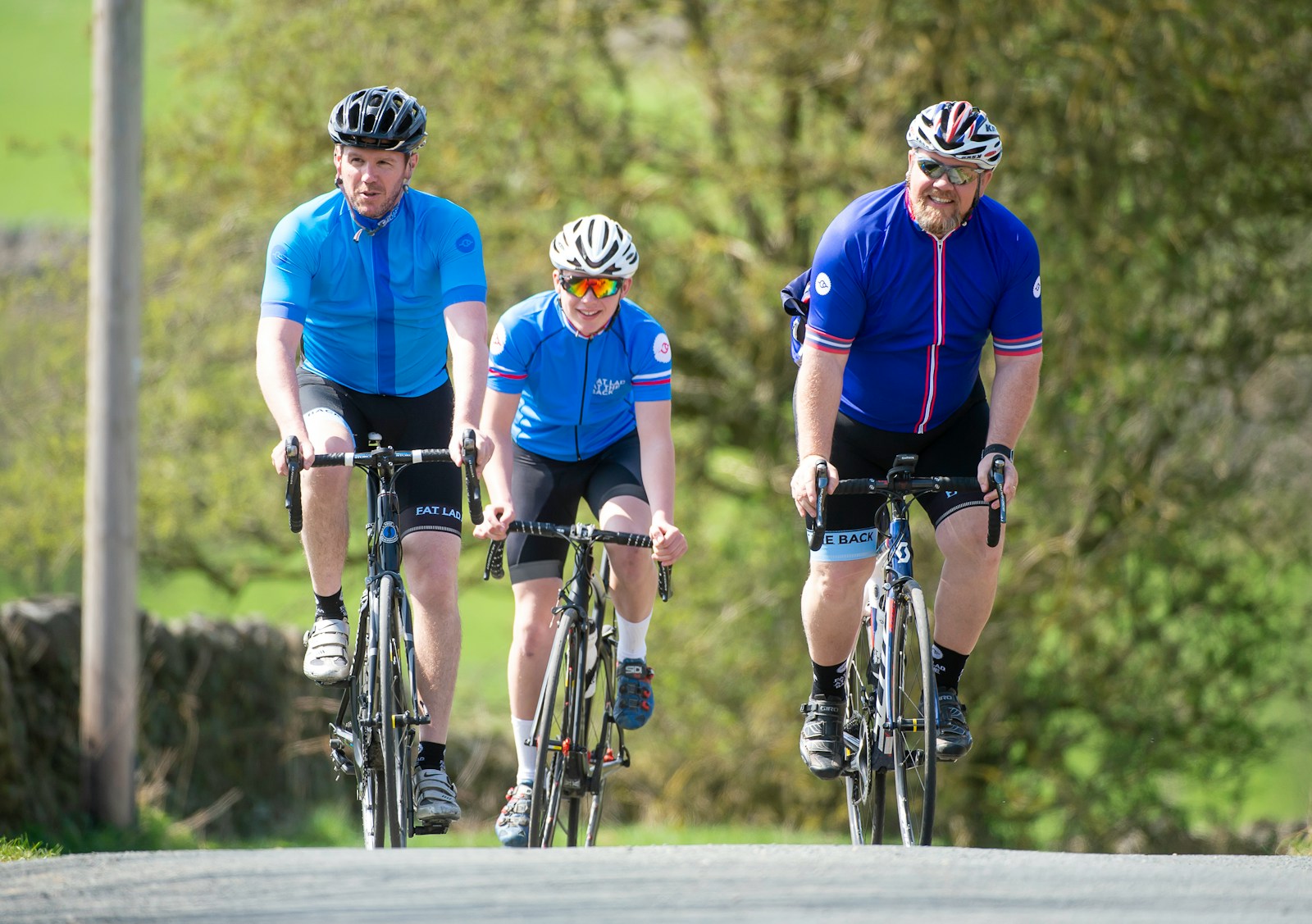Every neighborhood deserves safe, accessible cycling opportunities, but too many communities lack the infrastructure, resources, and programming needed to make cycling a viable option for residents. Building bike equity requires more than just adding bike lanes—it requires comprehensive community-led programs that address barriers, build skills, and create lasting change. This toolkit provides practical guidance for community organizers, neighborhood leaders, and residents who want to start their own local cycling programs.
Understanding Bike Equity: More Than Infrastructure
What Is Bike Equity?
Bike equity means ensuring that all people, regardless of income, race, age, ability, or geographic location, have equal access to safe cycling opportunities and the benefits that cycling provides. This includes:
- Physical access: Safe infrastructure connecting homes to destinations
- Economic access: Affordable bikes, maintenance, and safety equipment
- Cultural acceptance: Community norms that support cycling for all demographics
- Educational access: Skills training and safety education in multiple languages
- Political power: Community voice in transportation planning decisions
Common Barriers to Cycling Equity
Before starting a community cycling program, it’s important to understand the barriers that prevent equitable cycling access:
Infrastructure Barriers:
- Lack of protected bike lanes and safe routes
- Poor intersection design and dangerous crossings
- Inadequate lighting and visibility
- Missing bike parking and storage facilities
Economic Barriers:
- High cost of purchasing and maintaining bicycles
- Expensive safety equipment (helmets, lights, locks)
- Limited access to bike repair services
- Lack of secure storage leading to theft
Social and Cultural Barriers:
- Cycling seen as recreation rather than transportation
- Cultural norms that discourage certain groups from cycling
- Safety concerns about crime and harassment
- Lack of community support and social connections
Knowledge and Skills Barriers:
- Limited cycling experience and confidence
- Lack of traffic safety knowledge
- Basic mechanical skills for bike maintenance
- Route-finding and navigation challenges
Phase 1: Community Assessment and Organizing
Conducting a Neighborhood Assessment
Start by understanding your community’s specific needs, assets, and challenges:
Transportation Needs Survey:
- How do residents currently get around?
- What are the main destinations (work, school, shopping, healthcare)?
- What transportation challenges do people face?
- What interest exists in cycling as transportation?
- What are the main barriers to cycling?
Infrastructure Audit:
- Map existing bike infrastructure and gaps
- Identify dangerous intersections and road conditions
- Assess lighting, signage, and maintenance needs
- Document barriers to accessibility (curb cuts, narrow paths)
- Note potential for bike parking and storage
Community Assets Inventory:
- Existing community organizations and leaders
- Available meeting spaces and programming locations
- Local businesses that could support cycling
- Schools and educational institutions
- Potential funding sources and partnerships
Building Your Organizing Team
Successful community cycling programs require diverse, committed leadership:
Core Organizing Team (5-8 people):
- Community connectors: People with deep neighborhood relationships
- Parents and families: Representing family cycling needs
- Youth leaders: Bringing energy and fresh perspectives
- Senior representatives: Addressing mobility and accessibility concerns
- Recent immigrants: Understanding newcomer transportation challenges
- Technical supporters: People with cycling, legal, or organizing experience
Phase 2: Program Design and Planning
Core Program Components
1. Bike Access Program
- Earn-a-Bike workshops: Participants learn basic maintenance while refurbishing donated bikes
- Bike lending library: Short-term bike loans for people testing cycling
- Family bike program: Access to cargo bikes and child seats for family transportation
- Adaptive cycling options: Tricycles and other bikes for people with disabilities
2. Education and Skills Training
- Learn-to-ride classes: Adult and child bicycle education
- Traffic safety workshops: Road rules, defensive cycling, and route planning
- Basic maintenance clinics: Tire repair, brake adjustment, and routine upkeep
- Confidence-building rides: Guided practice in low-traffic environments
3. Community Rides and Events
- Family fun rides: Monthly recreational rides for all ages and abilities
- Commuter convoys: Group rides to work, school, or transit stations
- Neighborhood tours: Exploring local destinations and businesses by bike
- Cultural celebrations: Bike events tied to community festivals and holidays
4. Advocacy and Infrastructure
- Community safety audits: Resident-led assessments of cycling conditions
- City council engagement: Regular attendance and testimony at public meetings
- Petition and campaign organizing: Building community support for improvements
- Partnership building: Working with other transportation and community groups
Phase 3: Implementation and Partnerships
Building Strategic Partnerships
Community Organizations:
- Neighborhood associations: Existing community structure and meeting spaces
- Schools and PTAs: Family engagement and safe routes to school
- Religious institutions: Community trust, meeting spaces, and volunteer networks
- Community centers: Programming space and existing participant networks
- Immigration services: Reaching recent arrivals who need transportation options
Local Businesses:
- Bike shops: Discounted services, donation of used bikes and parts
- Local employers: Bike commuter incentives and secure parking
- Healthcare providers: Wellness programming and health education partnerships
- Restaurants and cafes: Hosting events and supporting bike-friendly policies
Funding Your Program
Startup Funding ($5,000-15,000):
- Community foundation grants: Local foundations supporting neighborhood initiatives
- Health department grants: Physical activity and injury prevention funding
- Corporate sponsorships: Local businesses supporting community programs
- Crowdfunding campaigns: Community-driven fundraising for specific needs
- Faith community support: Congregational donations and fundraising events
Essential Equipment ($3,000-8,000):
- Refurbished bicycles: 10-20 bikes for lending and earn-a-bike programs
- Safety equipment: Helmets, lights, locks, and reflective gear
- Repair tools: Basic tools for maintenance workshops
- Educational materials: Safety handbooks, maps, and signage
- Event supplies: First aid kits, portable speakers, refreshments
Phase 4: Measuring Success and Sustainability
Key Performance Indicators
Participation Metrics:
- Number of residents served annually
- Demographic diversity of participants
- Retention rates for ongoing programming
- Community event attendance
Outcome Measurements:
- Increased cycling frequency among participants
- Improved cycling confidence and safety knowledge
- Use of cycling for transportation vs. recreation
- Community advocacy engagement and policy wins
Community Impact:
- Changes in neighborhood cycling infrastructure
- Increased visibility of cycling in the community
- Development of community leadership and organizing capacity
- Connections built between different community groups
Long-term Sustainability
Financial Sustainability:
- Diversified funding from multiple sources
- Earned revenue through fee-for-service contracts
- Community fundraising and membership support
- Partnership with established organizations for fiscal sponsorship
Organizational Sustainability:
- Strong volunteer base with clear roles and training
- Leadership development and succession planning
- Regular program evaluation and adaptation
- Community ownership and investment in program success
Case Studies: Successful Community Programs
Eastside Bike Club (Seattle, WA)
Started by immigrant families in South Seattle, this program focuses on family cycling and safe routes to school:
- Strategy: Door-to-door outreach in multiple languages
- Programming: Family bike rides, learn-to-ride classes, advocacy training
- Results: 200+ families served, three new protected bike lanes secured
- Key lessons: Cultural competency and language access are essential
North Lawndale Cycling Club (Chicago, IL)
Community-led program addressing transportation equity in a historically disinvested neighborhood:
- Strategy: Partnership with local high school and community health center
- Programming: Youth leadership development, adult education, bike repair cooperative
- Results: 150 bikes distributed, 25 youth trained as bike mechanics
- Key lessons: Youth leadership creates intergenerational engagement
Dignidad Rebelde Bike Collective (Richmond, CA)
Immigrant rights organization using cycling to build community power and address transportation justice:
- Strategy: Connecting cycling to broader social justice organizing
- Programming: Bilingual safety education, community rides to government meetings
- Results: Policy changes increasing bike infrastructure funding in low-income communities
- Key lessons: Cycling advocacy can strengthen broader community organizing
Overcoming Common Challenges
Low Initial Participation
Causes: Lack of awareness, cultural barriers, competing priorities
Solutions:
- Door-to-door outreach and personal invitations
- Partner with trusted community organizations
- Start with small, informal gatherings
- Address immediate community concerns alongside cycling
Safety Concerns
Causes: Dangerous infrastructure, crime, harassment
Solutions:
- Start with low-traffic routes and protected spaces
- Organize group rides for safety in numbers
- Coordinate with community policing efforts
- Advocate for lighting and visibility improvements
Limited Resources
Causes: Funding challenges, lack of equipment, volunteer burnout
Solutions:
- Start small and grow gradually
- Build strong partnerships for resource sharing
- Apply for multiple small grants rather than relying on one large funder
- Develop volunteer leadership and shared responsibility
Resources and Tools
Downloadable Resources
- Community Assessment Survey Template
- Safety Audit Checklist
- Sample Partnership Agreements
- Grant Writing Guide for Community Groups
- Event Planning Checklists
- Program Evaluation Tools
Technical Assistance
- Webinar series: Monthly online training on community organizing topics
- Peer mentoring: Connection with experienced community program leaders
- Site visits: Opportunities to learn from successful programs
- Coalition building: Regional networks of community cycling advocates
Legal and Organizational Support
- Pro bono legal clinics: Assistance with organizational structure and liability
- Fiscal sponsorship networks: Established nonprofits providing administrative support
- Insurance resources: Group purchasing for liability coverage
- Policy advocacy training: Skills for engaging with local government
Call to Action: Start Building Bike Equity in Your Community
Every community has the potential to create more equitable cycling opportunities, but it requires committed residents willing to organize, advocate, and build together. The tools and strategies in this guide provide a roadmap, but each community must chart its own course based on local needs, assets, and culture.
Your Next Steps
- Assess your community: Talk to neighbors about transportation needs and cycling barriers
- Find your team: Identify 3-5 committed people to start organizing with you
- Start small: Host an informal community meeting to gauge interest and gather input
- Build partnerships: Connect with existing community organizations and potential allies
- Take action: Begin with one concrete program or advocacy effort
Connect with Cycling Unbound Foundation
We’re here to support your community organizing efforts with technical assistance, resources, and connections to other community programs:
- Community Organizer Support: One-on-one consultation for new programs
- Resource Library: Access to templates, guides, and planning tools
- Peer Learning Network: Quarterly meetings with other community organizers
- Advocacy Training: Skills development for policy change efforts
Ready to start organizing for bike equity in your community? Contact us at organizing@cyclingunbound.org or call (703) 555-BIKE to connect with our community organizing team.
Cycling Unbound Foundation believes that every neighborhood deserves safe, accessible cycling opportunities. Through community-led organizing and advocacy, we can build transportation systems that serve everyone equitably. Together, we can make cycling accessible in every community.




This toolkit is exactly what our neighborhood needed! We’ve been struggling to organize around bike safety, and the step-by-step guidance here is invaluable. I especially appreciate the emphasis on cultural competency and language access – so many resources ignore the diverse needs of our communities.
As someone who’s been working in community development for 15 years, I can’t stress enough how important the funding section is. Too many great initiatives fail because they rely on a single grant. The diversified approach you outline here is spot on. We’re implementing this in East Arlington right now!
This is an excellent resource that aligns perfectly with our research on transportation equity. The emphasis on community-led development rather than top-down planning is crucial. I’d add that partnerships with local universities can provide valuable research support and student volunteers. We’ve seen great success with this model in several cities.
Question: How do you handle liability concerns when starting a community bike program? Our neighborhood association is interested but worried about insurance and legal issues. Any advice would be greatly appreciated!
Great question, Lisa! Liability is a common concern. Here are the key steps: 1) Partner with an established nonprofit as a fiscal sponsor – they often have umbrella insurance. 2) Look into special event insurance for rides (usually $100-200 per event). 3) Have participants sign waivers. 4) Consider forming a 501(c)(3) to access nonprofit insurance rates. The pro bono legal clinics mentioned in the toolkit can help you navigate this. Many successful programs started with just basic event insurance and grew from there!